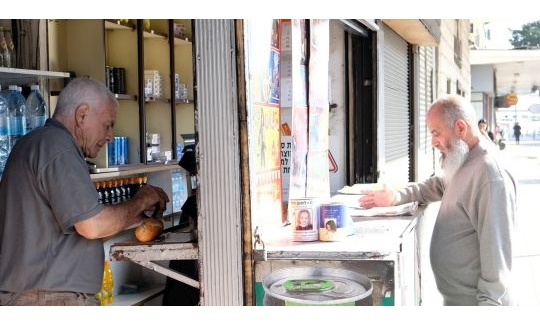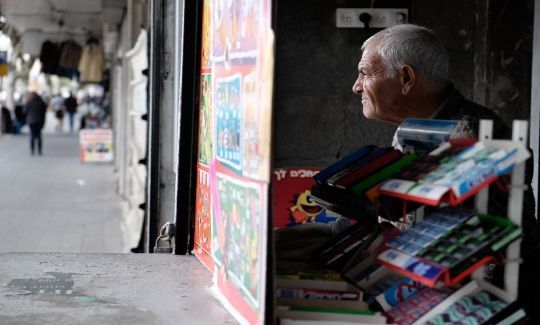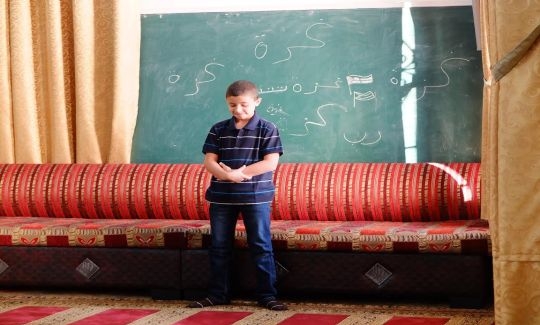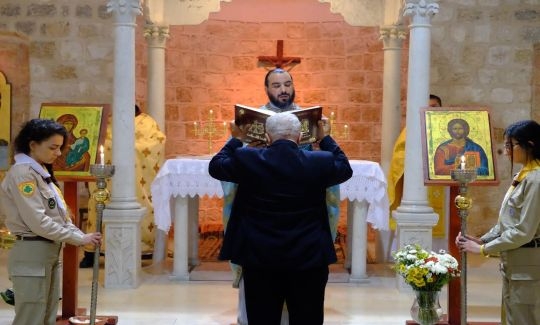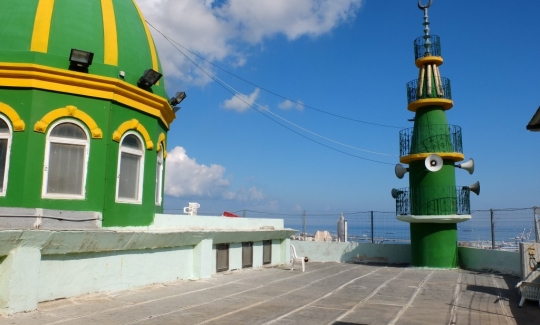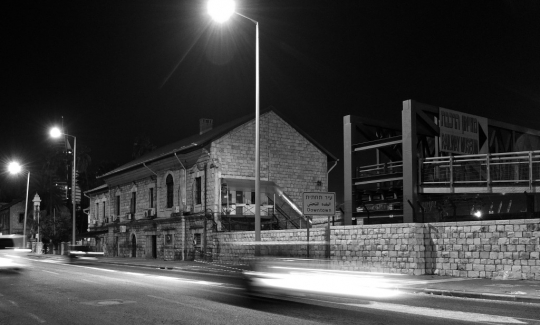Downtowners
Ever since its foundation in the late eighteenth century, Haifa al-Jadida (the new Haifa) has served as the focal point of Arab society's economic, civil, and religious life. Due to the area's density and commercial importance, various initiatives for urban change were undertaken during the late Ottoman period and under the British Mandate. Most of these plans were not realized, mainly due to the resistance of property owners and the cost of providing residents with alternative housing. In April 1948, Haifa was conquered by the Haganah forces, and was quickly transformed from a "mixed city" into a "Hebrew city." Following the end of the battles and the forced evacuation of Arab homeowners, the area was subjected to a comprehensive military plan for its destruction, titled "Operation Shikmona." This military operation involved the elimination not only of already-destroyed houses, but also of ones whose location would impede future urban development plans. For the following five decades, the downtown area remained empty and desolate, like an open wound refusing to heal. Over the past few decades, a process of urban renewal has been taking place among the crumbling ruins of Wadi Salib and at the heart of the historical center. This development has stemmed in part from the independent initiatives of business owners and residents, and in part from the municipality's rebranding of the area as a culture and leisure zone.
Over the past two years, Hamody (Mohammad) Gannam(b. 1986, Haifa) has been consistently documenting people, places, events and moments in this process of downtown renewal – a choice stemming from his own presence in the area. As part of the rehabilitation program for downtown Haifa, Gannam has received an artist's studio at 10 Hanamal Street (formerly Ha'hurvanightclub). While working in his studio, he began documenting the environment and became a social activist in the "Temporary Forum" – an independent body founded by cultural figures and artists who have received work and display spaces in the downtown area, and who have committed themselves to initiating a range of activities for local residents and children.
This exhibition sets out to explore place and people who remain almost invisible to passersby in this urban area – those excluded to the margins of the city's public discourse. Gannam's body of works extends from the shoreline to the lower slopes of the Carmel, from Al-Mahattael-Atiqa to al-Halisa, from Wadi Salib to Wadi Nisnas. His photographs focus on small local businesses and veteran Muslim and Christian residents, alongside Jewish families which are, for the most part, economically disadvantaged. The photographs range from documentary to staged images, and are by turns political, personal, and intimate. This exhibition seeks not only to document life in downtown Haifa, but also to shed light on the connection forged between a photographer and the inhabitants of a certain area, and the attempt to reduce the gap between the gaze of an outsider the content of the photographs. The works included in this exhibition all reflect the relationship of trust and intimacy forged between the photographer and his subjects.
Inbar Dror Lax
Curator
Eid al-Adha
These photographs follow a group of boys from WadiNisnas – 'Amran, , Anan, Diaa, Adham, Alaa, Bahaa , and others – as they move among different locations during Eid al-Adha (Feast of the Sacrifice), one of the two most important Muslim holidays. The encounter begins in their neighborhood, and follows them as they attend prayers at al-Istiqlal Mosque on Kibbutz Galuyot Street. Following the prayer, it is a custom for unmarried boys to volunteer in the community. The group thus moves on to al-Haj Mosque on Usefiye Street in the Halisa neighborhood for the holiday's main event: the slaughtering of animals and the division of the meat among needy families. This event is sponsored by the Flower of Carmel Haifa Foundation, where many city residents and businessmen volunteer.
Al-Istiqlal Mosque
This mosque, whose name means "independence" in Arabic, was built during the 1920s, in the late Ottoman period, and is considered to be the largest and most active mosque in the Haifa area. It is also home to the Sharia tribunal and the Waqf administration, which services Muslims in Haifa and its environs.
Running a Red Light
Gabi (Gabriel) Toledano is the owner of a small kiosk on Ha'atzmaut Street in the downtown area. Gabi, who was born in Meknes, Morocco, immigrated to the country in 1956 and settled on Kibbutz Yifat in the Jezreel Valley. He later worked as a shepherd when members of his kibbutz moved to join Kibbutz Gezer, in the vicinity of Ramla, Gabi later joined the Israeli merchant marine and worked on luxury cruise lines throughout the world. Following the Six Day War (1967), he began working at the Pundak restaurant, and acquired the adjacent kiosk in 1975. For the past 30 years, he has been coming there daily in the morning and raising the metal shutter to sell sandwiches, cigarettes, ice-cream and soft drinks, and stare at the passersby until the afternoon. He then shutters the kiosk, to which he does not return until the following morning.
The Feast of the Annunciation
These photographs document the Mass marking the Feast of the Annunciation in the al-Mahatta (Station) neighborhood, also known as the Carmel Station. The Feast of the Annunciation takes place on March 25. The Mass documented in this series was conducted by Archim. Agapios Abu Saada – the priest of Haifa's Catholic community.
Church of St. Gabriel
This church was built in the late 1920s with funds donated by Gabriel Fouad Asad, a prominent member of the local Catholic community. A school founded in the vicinity of the church served the city's Christian community under the British Mandate. From 1948 onwards, the building was neglected for several decades. In recent years, numerous donations have been made to restore it. A number of volunteers and donors, including Kamil Shahda and Nabil Abud, overseen by the Greek Catholic Eparchy, have supervised a comprehensive renovation of the church, following the collapse of its ceiling and tile roof. The liturgical items currently in the church were donated by other churches in the city. The altar, for instance, was donated by the Mar Elias Church on Ein Dor Street. At present, Russian Catholics residing in Haifa also worship at the Church of St. Gabriel.

